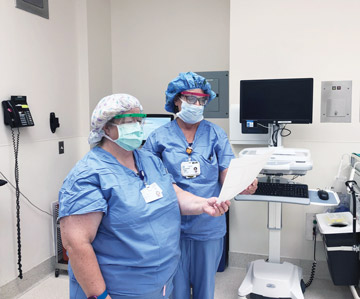No surgeon wakes up in the morning with the intention of performing a wrong-site surgery and yet these types of never events continue to happen, even with protocols and practices in place to prevent them. It's clear the inconsistent or improper use of checklists before and after surgery continues to be an issue at surgical facilities across the county.
Checklists are multidisciplinary tools, but not all participants in pre-op time outs are actively engaged in completing them. Because of this, Kimberly Platt, MSN, RN, CAPA, director of nursing surgical services at Cleveland Clinic's Marymount Hospital, helped launch the "Summer of Safety" initiative with the aim of re-educating the perioperative team about the importance of performing time outs and using checklists to improve patient safety —and how to implement each properly.
"Some nurses said they needed a checklist, a visible aid, so we set out to develop a checklist that created actual accountability for each step of the Universal Protocol," says Ms. Platt. "The sign-in, time out and sign-out now have specific communication tasks for each team member to complete in order to ensure all items are addressed."
The hospital's leadership and quality officer developed action steps, which included bi-monthly leadership team meetings, a communication plan to relaunch the facility's safety checklist, a reassessment of the current audit tool to make sure its elements matched the safety checklist, and developing a plan for real-time data collection and analysis. They also determined the number of daily audits they wanted to perform to ensure the surgical team was properly performing safety time outs, and developed auditor training and multifaceted education programs to support the understanding of how the Universal Protocol impacts patient safety and team collaboration.
"We had IT create an iPad audit tool, and the nursing quality assurance program manager provided training to two OR nurses on how to use it as secret auditors," says Ms. Platt. "The nurses record whether surgeons, nurses, anesthesia providers and surgical technicians properly complete their defined roles on the patient safety checklist."
In order to get accurate data, it was extremely important for these nurses to be very honest in their assessments. "We were able to track the compliance of the Universal Protocol for 45 to 60 days, and then we analyzed all the data," says Ms. Platt.
.svg?sfvrsn=be606e78_3)

.svg?sfvrsn=56b2f850_5)